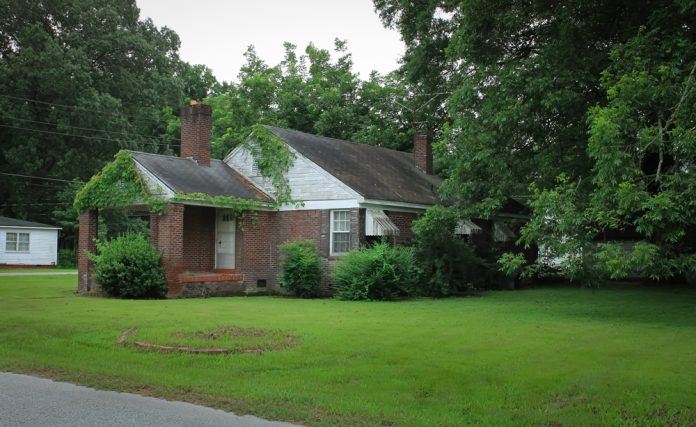Have you ever scrolled through a real estate listing and seen the term “as-is” and wondered what it really means?
At first glance, it can sound a little intimidating, as if buying the home might come with hidden surprises around every corner. But don’t worry, understanding “as-is” is simpler than it seems, and knowing what to expect can help you make smarter decisions when looking for your next home.
Whether you’re a first-time homebuyer or a seasoned investor, encountering an “as-is” property is not unusual. These listings can be a great opportunity, but they also come with specific considerations that every buyer needs to understand. In this article, we’ll break down what “as-is” means, how it affects buyers and sellers, and the key factors to consider before making a purchase.
Understanding the “As-Is” Concept in Real Estate
When a home is listed as “as-is,” it means the seller is offering the property in its current condition. They are not obligated to make repairs, improvements, or fix any problems discovered during inspections. This can range from minor cosmetic issues to significant structural problems. Essentially, the seller is saying, “This is the house as it stands, and I’m selling it this way.”
It’s important to note that “as-is” does not absolve sellers of their legal obligations. Sellers must still disclose known issues with the property. However, the key difference is that buyers cannot require the seller to make repairs or negotiate for fixes after an inspection unless the contract specifically allows it. The “as-is” label shifts more responsibility to the buyer to understand what they’re purchasing.
Many buyers initially worry that “as-is” homes are automatically dangerous or unlivable. In reality, an “as-is” listing can include a range of properties—from homes that need minor updates to those requiring major repairs. The term simply signals that the seller will not be handling any repair work before the sale.
How “As-Is” Affects Buyers
For buyers, an “as-is” property can be both an opportunity and a risk. On the positive side, these homes are sometimes priced lower than comparable properties in better condition. This can make “as-is” homes attractive for investors or buyers willing to do renovations themselves. If you’re prepared for the potential work, an “as-is” home can be a smart financial move.
However, buyers need to approach “as-is” properties with caution. Since the seller isn’t obligated to make repairs, the buyer must be diligent about inspections. A professional home inspection is crucial to identify structural issues, plumbing or electrical problems, or any other defects that could be costly to fix. Even minor issues can become major expenses if overlooked.
Negotiation is still possible with “as-is” listings, but it typically revolves around the purchase price rather than requesting repairs. Buyers can factor the cost of repairs into their offer or decide to walk away if the property’s issues outweigh the value. The key is to be fully informed before signing a contract.
Considerations for Sellers Listing “As-Is”

From a seller’s perspective, listing a home “as-is” can simplify the selling process. It eliminates the need for costly repairs and can expedite the sale, especially for sellers looking to move quickly or dealing with a property that’s difficult to update. In some cases, such as estate sales or inherited properties, “as-is” may be the only practical option.
It’s essential for sellers to be transparent about any known issues. Failing to disclose problems can lead to legal consequences, even if the home is sold “as-is.” Proper documentation and honesty can protect the seller while still allowing them to market the property as-is.
Additionally, sellers should consider pricing the property appropriately. “As-is” homes often attract buyers who are looking for a lower price point, so setting a realistic price that reflects the condition of the home can generate interest without creating unrealistic expectations.
Examples of “As-Is” Situations
Consider a home where the roof has minor leaks and the HVAC system is outdated. In an “as-is” sale, the seller isn’t required to replace the roof or upgrade the heating and cooling system. The buyer can still conduct an inspection and decide whether to proceed with the purchase knowing these issues exist.
Another example might be a home inherited from a family member. The property may have cosmetic issues, such as old flooring or outdated kitchens. Selling “as-is” allows the heirs to sell quickly without investing in renovations, while the buyer can choose to make improvements over time.
Even in cases where major repairs are needed, “as-is” listings can be appealing to investors or buyers with renovation experience. By purchasing the property below market value, they can invest in repairs and potentially see a significant return.
Making Smart Decisions with “As-Is” Properties

When considering an “as-is” property, thorough research and preparation are crucial. Buyers should always hire a qualified inspector, review disclosures carefully, and consult with a real estate professional. Understanding the full scope of potential repairs and costs can prevent surprises down the road.
For sellers, being transparent and setting realistic expectations will make the transaction smoother and protect against disputes. Properly marketed, “as-is” homes can attract buyers who are comfortable with the condition of the property and ready to take on the challenge.
Ultimately, “as-is” doesn’t have to be a red flag. It’s simply a term that sets expectations for both buyers and sellers. Knowing what it means and how it impacts the transaction is the best way to approach these listings with confidence.
FAQ About “As-Is” Homes
Can I negotiate repairs on an “as-is” property?
In most cases, sellers of “as-is” properties are not required to make repairs. However, buyers can still negotiate price reductions based on inspection findings. Any repair requests should be included in the offer or contract if the seller agrees.
Does “as-is” mean the home is unsafe?
No. “As-is” simply means the seller is not fixing issues before the sale. Homes sold “as-is” can range from minor cosmetic problems to major repairs. A professional inspection will provide a clear picture of the property’s condition.
Are inspections required for “as-is” homes?
Inspections are not required by law, but they are highly recommended. An inspection helps buyers understand the condition of the home and identify potential issues, even if the seller will not make repairs.
Why would a seller list a home “as-is”?
Sellers often choose “as-is” to avoid costly repairs, expedite the sale, or sell a property they inherited or cannot update. It allows them to market the home honestly while limiting responsibilities.
Is buying an “as-is” home a good deal?
It can be, especially for buyers willing to invest in repairs or renovations. The lower purchase price often reflects the property’s condition, providing an opportunity for value improvement if managed wisely.

